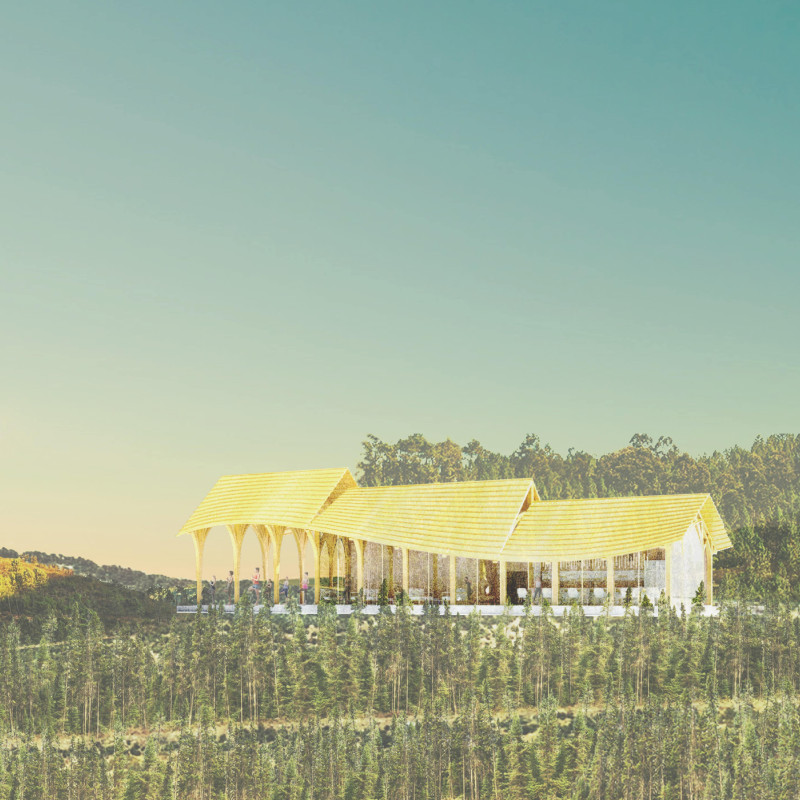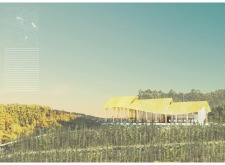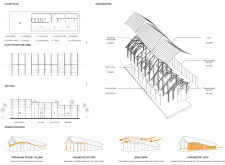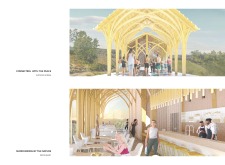5 key facts about this project
The Yoga Shrine serves as a dedicated space for experienced yoga practitioners, set against a backdrop of nature. It aims to create a spiritual environment that allows users to connect deeply with both their practice and the surrounding landscape. The design embodies the concept of a shrine, emphasizing tranquility and community interaction while providing various areas for focused practice and relaxation.
Design Concept
The overall design emphasizes an inviting atmosphere, fostering social connection and introspection. Continuous arches mirror the forms of nearby trees, guiding people through open pathways and linking the interior with the lush surroundings. This architectural choice enhances the serene quality of the space, allowing the environment to influence the experience within.
Material Use
Bamboo serves as the primary building material, chosen for its sustainability and alignment with the natural context. This decision supports environmentally friendly practices while connecting the structure to the nearby mountains. The use of bamboo allows for efficient construction, making it a practical choice that also reflects a commitment to conservation.
Spatial Organization
The layout encourages easy movement, dividing the space into areas for yoga, dining, and lounging. Transparency in the façades allows natural light to enter and provides visibility into yoga practice, fostering engagement with the community. An outdoor atrium creates a peaceful area surrounded by nature, inviting users to immerse themselves in their environment.
Height variations within the design facilitate natural ventilation, enhancing comfort throughout the space. The approach combines open areas with defined zones, creating a sense of flow. Each element, from the arches to the transparent walls, works together to build an inviting experience, blending the boundaries between interior practice and the natural world outside.






















































